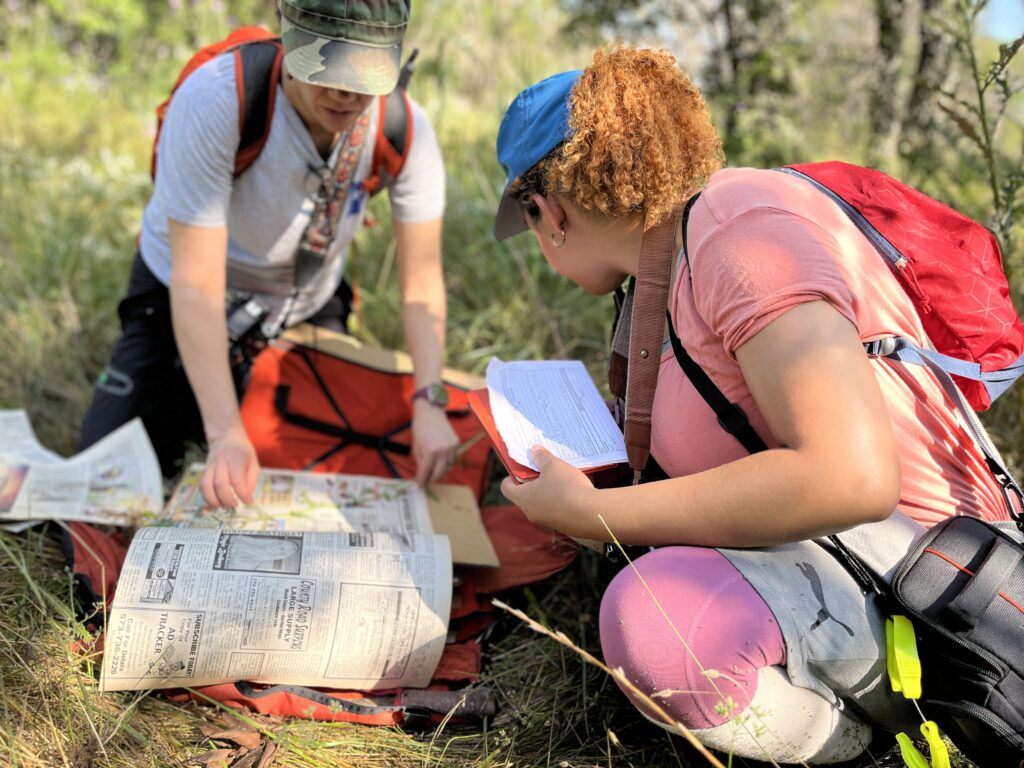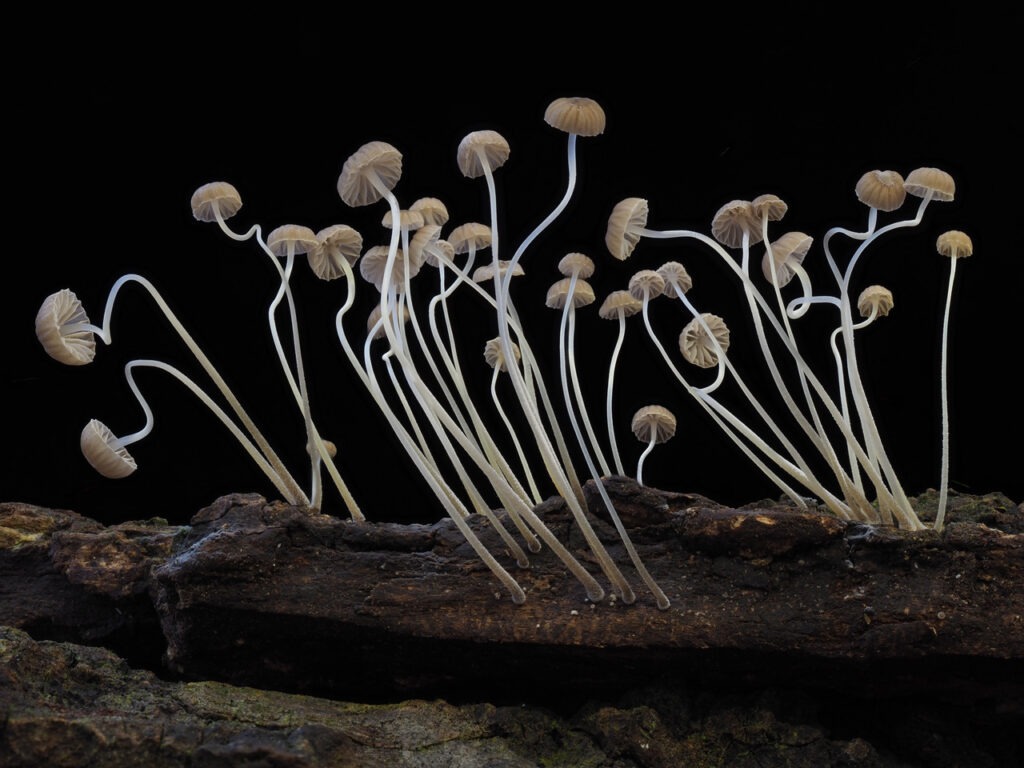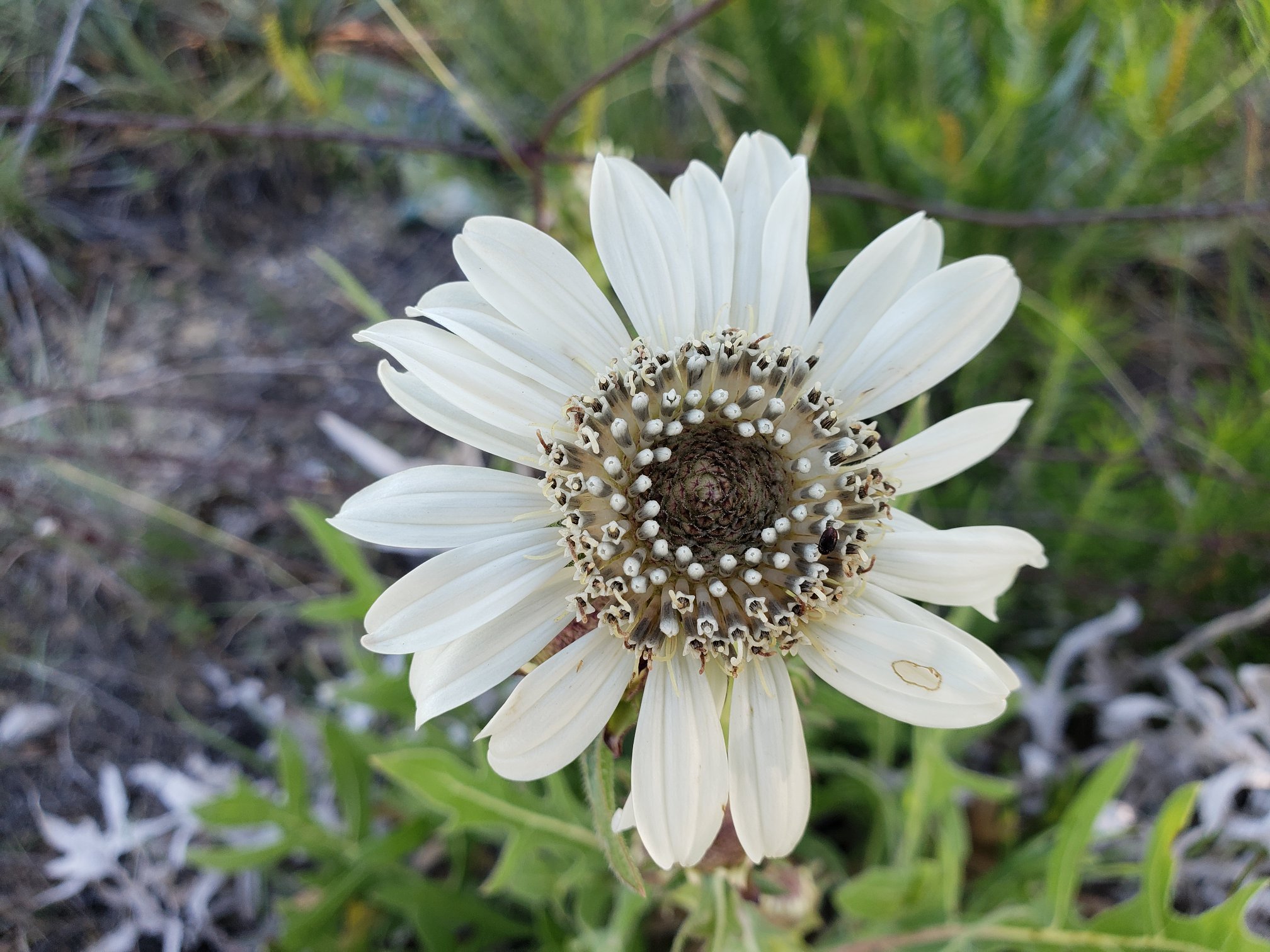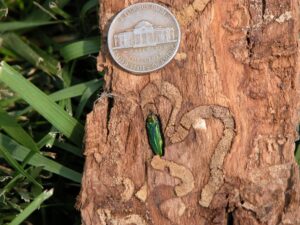
Every year, the research team adopts a few special plants as a focus for study and conservation, especially for the student interns who join the Garden every summer. This year, interns and their mentors are paying special attention to two plants, a wildflower native to Texas and a rare and remarkable native orchid, Meanwhile a third intern is investigating fungi growing in the Garden itself.
A Texas native exquisitely adapted to our climate
First up is Silphium albiflorum, commonly known as white rosinweed. This member of the Asteraceae family is endemic to our state–that is, it only grows in Texas. The plant produces large, white, daisy-like flowers and grows one- to three-feet high.

The habitat for the plant is a swath of Texas that stretches along the route of Interstate 35 from the Red River in the north to San Antonio in the south and extends west into the Edwards Plateau. The plant prefers rocky soil and is supremely adapted to the dry Texas climate. It has a remarkably deep taproot that can reach up to 15 feet deep, allowing it to draw water from even the most parched soil. Observers frequently say it seems to grow straight out of solid rock.
Another adaptation is the way the plant’s large, flat leaves always align in a north-south direction. This exposes the leaves’ surface to as much sunlight as possible and gives the plant another common name, compass plant.
White rosinweed is not listed as threatened or endangered, but it is certainly rare and likely a candidate for being named a plant of greatest conservation need. It plays an important part in the ecosystem since it blooms during the hottest part of the summer, providing pollinators such as butterflies a critical food source.
Garden intern Reilly Cavous, a student at the University of North Texas, is currently on the lookout for Silphium albiflorum and other rare plants as part of a survey of an area in southwest Fort Worth that the city purchased in 2021 to become Rock Creek Ranch Park.

A rare orchid with a remarkable lifecycle
The second flagship species is the beautiful and fascinating Hexalectris warnockii, known as Texas purple spike, Texas coralroot or giant coralroot. The plant is a member of the Orchidaceae family. Many Texans have no idea that native orchids, cousins of the tropical orchids sold in grocery stores and greenhouses, are found in the state.
Hexalectris warnockii has been spotted in Texas (most commonly in the Davis Mountains and Big Bend National Park), Arizona, and two northern states of Mexico, Coahuila and Baja California Sur. The plant grows at the base of juniper and oak trees, emerging as a purple-brown spike with dark purple-red and white flowers. The plant is listed as an endangered species on the International Union for Conservation of Nature Red List of Threatened Species.
Giant coralroot is among a group of plants that violates one of the most fundamental rules of what makes a plant a plant. Children are taught all plants produce their own energy through photosynthesis. But giant coralroot is mycoheterotrophic, which means it does not photosynthesize sunlight into food.
Instead, the plant maintains a symbiotic relationship with fungi, which provide all the nutrients the plants need. In particular, Hexalectris warnockii relies on an underground fungal partner that produces carbon and sugar for the plant. Many orchids are mycohetertropes, but Hexalectris warnockii is part of an even more complicated system, since the fungal partner is in another symbiotic relationship with the surrounding oak and juniper roots. It’s an unusual lifecycle that shows nature will always find a way.
Victoria Holman, a student at Baylor University, is studying giant coralroot along with other orchids at Cedar Ridge Preserve in Dallas. In a project funded in part by the Southwest Regional Orchid Grower’s Association, Holman is surveying the preserve to get a better sense of the size and distribution of orchids on site. Ben Durrington from the Garden’s Living Collections team is also studying the plant to see if it could be cultivated in a greenhouse–a tricky task that has so far remained out of reach.
We want to emphasize that these are extremely rare plants. If you happen to spot one in the wild–or even think you might have come across a giant coralroot–please leave it alone!

On the hunt for fungi within the Garden
We can’t tell you the name of the final species that is the focus of a research intern this summer–because no one knows it yet. Alicia Tolley, a student at Texas A&M Corpus Christi, is working with the Fungi, Myxomycetes, and Trees Program team studying fungi and slime molds that live on trees within the Garden. One particular mushroom has caught their attention, but until more research is completed they won’t know the name of the species or if is new to science.
If that sounds unlikely, in 2021, Garden researchers identified a previously unknown microscopic mushroom growing on the bark of an American elm tree in the Garden.
Student interns make important contributions to the research work of the Garden and help us uncover secrets of the natural world. We appreciate their work protecting rare and threatened species so these plants can thrive for generations to come.







